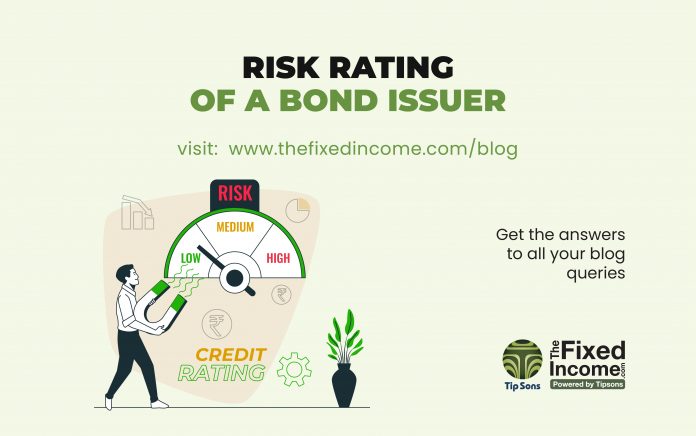

I must say, the Scam 1992 team did a sensational job. From dialogue delivery to cinematography to music, you name it and they delivered at par excellence.
And cheery on topping is Pratik Gandhi’s flawless acting, and what I can’t get out of my mind is his delivery of “risk hai toh ishq hai”! He nailed it. Too good.
Now, let me not get carried away with the sight of that one sided smile and a calm peaceful demeanor of saying something so risky in such a risk free manner!
Well, what Pratik Gandhi ‘aka’ fictional Harshad Mehta could have meant by those lines is that there is no charm in investing without taking any risk. This is purely my interpretation of the movie dialogue which may or may not have actually been said by the real Harshad Mehta, and some may even find this dialogue very tacky. Irrespective of all, it simply grows on you. And it’s the word “risk” which catches an investor’s attention.
Harshad Mehta was renowned for being bullish, and earned the title the “Big Bull” of BSE during the 90’s. He did take calculated and not-so calculated risks during his trading years. On a fictional front, even Antonio in ‘Merchant of Venice’ took a risk by agreeing to be a debt guarantor for Bassino knowing how shrewd Shylock, the moneylender, can be! Shakespeare would have known of such risks prevailing in the society then, hence mention of the same in his play.
Irrespective of whether it’s in fictional context or in real life trading, understanding of the risk factor plays an integral role in an investor’s investment decisions.
Specific to fixed income securities, each time a bond issuer issues a bond they also disclose a credit rating along with other key terms and conditions. It’s a rating assigned to a bond issuer by an independent credit rating agency, and is an assessment of the creditworthiness of the bond issuer.
Before investing in a bond or a debt security or any security or instrument for that matter, an investor should ideally access the credit rating assigned to a bond issuer, as a credit rating would indicate an issuer’s ability to repay its own debt. And an area of interest and concern to an investor to safeguard their investment.
CREDIT RATING
What does a credit rating tell you about a bond issuer? In plain vanilla terms, a credit rating is an indicator of the credit risk borne by the bond issuer.
Each time an investor invests in a bond, they are fundamentally lending a loan to the bond issuer to be repaid after a set period of time, along with periodical coupon payment, in most bond investments, during the duration of the investment. And it is in the interest of an investor to know the creditworthiness of a company or a government body they have invested money in, as that would determine the ability of the bond issuer to repay the loan (initial investment) they took from investors (bond holders).
Higher credit rating implies less risky investment and lower credit rating implies highly prone to credit risk and hence likelihood of defaulting on payment of the money borrowed from the investors (bond holders).
An independent credit rating agency assigns a credit rating to an instrument and/or company or a government body, by determining it’s ability to meet or default it’s own debt obligations in full and on time. Also referred to as creditworthiness of a company.
CRISIL Ratings, ICRA, CARE, and India Ratings, are the prevalent credit rating agencies in India. Credit ratings are reviewed periodically and updated accordingly. Credit rating agencies will take into account various factors including new announcements made by a bond issuer or review of quarterly performance reports, or updates from lenders, before reviewing and updating the credit rating of a said bond issuer.
One must bear in mind that a credit rating alone is not the sole deciding factor of whether a company will default on their debt obligation or not. But it surely is a contributing factor and needs to be given due consideration prior to deciding which bonds one wants to invest in.
CREDIT RATING SCORE
Credit rating scores vary from agency to agency, but the rating nomenclature leveraged by credit rating agencies in India starts with the highest being ‘AAA’, implying least risky, to the lowest being ‘D’, implying most risky.
Rating agencies may also apply a +/- sign to the credit rating scores. Do note that a minus sign has no negative implication. +/- signs are generally applied within an rating category to draw distinction amongst bonds within that category. For bonds, CRISIL Ratings for e.g. adds a suffix +/- for rating category between AA to C, and the same is applied to corporates too.
Let’s take a look at a few points around interpretation of a credit rating assigned to a bond issuer:
A higher credit rating, for e.g. AAA, would imply that the bond issuer is creditworthy and will honour their debt obligation on time and in full
A higher credit rating implies less risk, hence bond issuer can afford to offer comparatively lower returns
A lower credit rating, for e.g. D, would imply that the bond issuer has a lower creditworthiness and will likely not honour their debt obligation on time and in full
A lower credit rating implies a more risky security, hence bond issuer may have to offer higher returns to compensate an investor for risk borne by them.
Credit ratings, hence, provides guidance to an investor in terms of whether an investment in a particular bond issuer will be lucrative or not.
Risk hai toh ishq hai, but risk is not always good! Gauge your appetite before investing in risky instruments, ensuring you are diversifying your portfolio to mitigate risks.
























